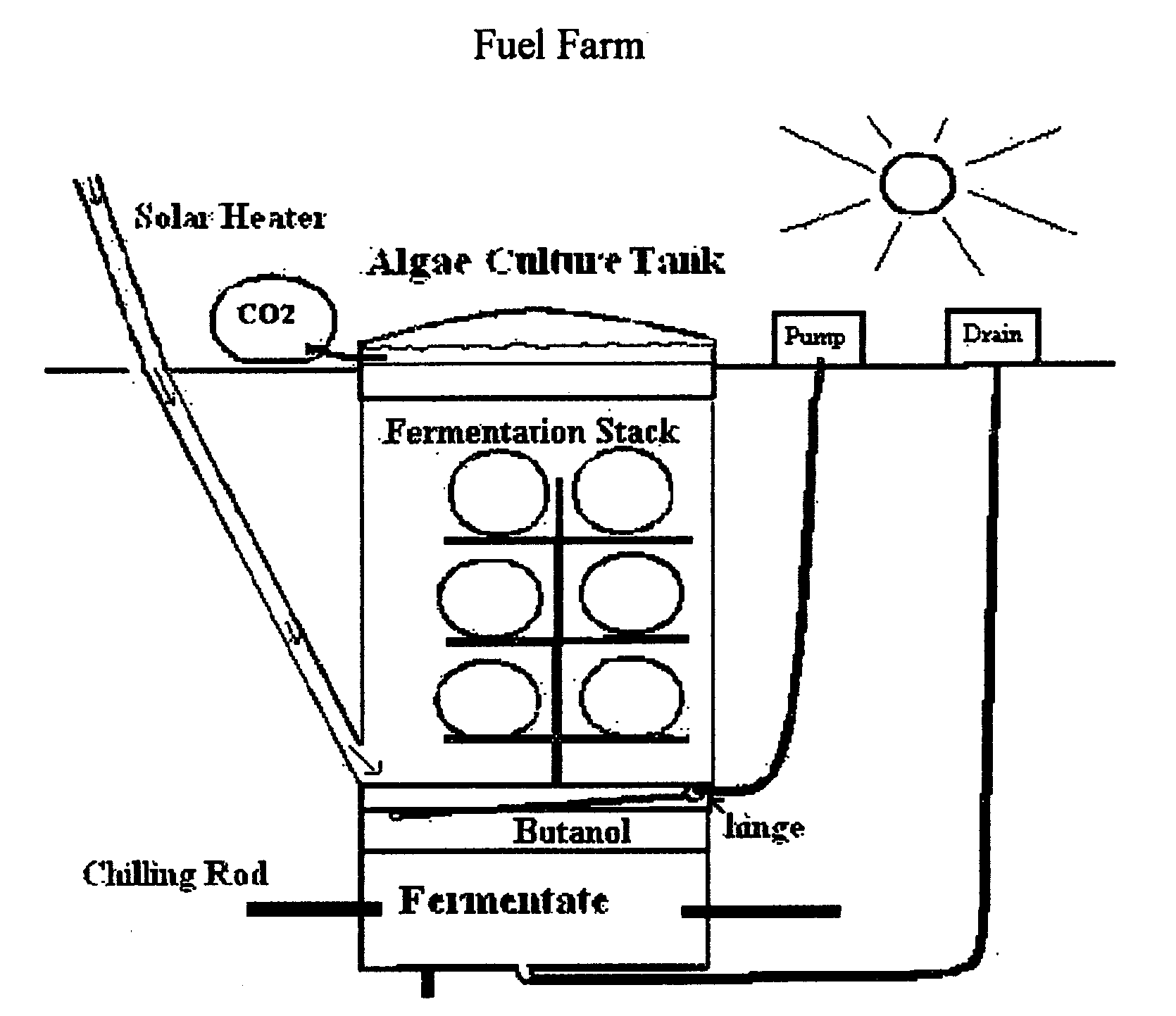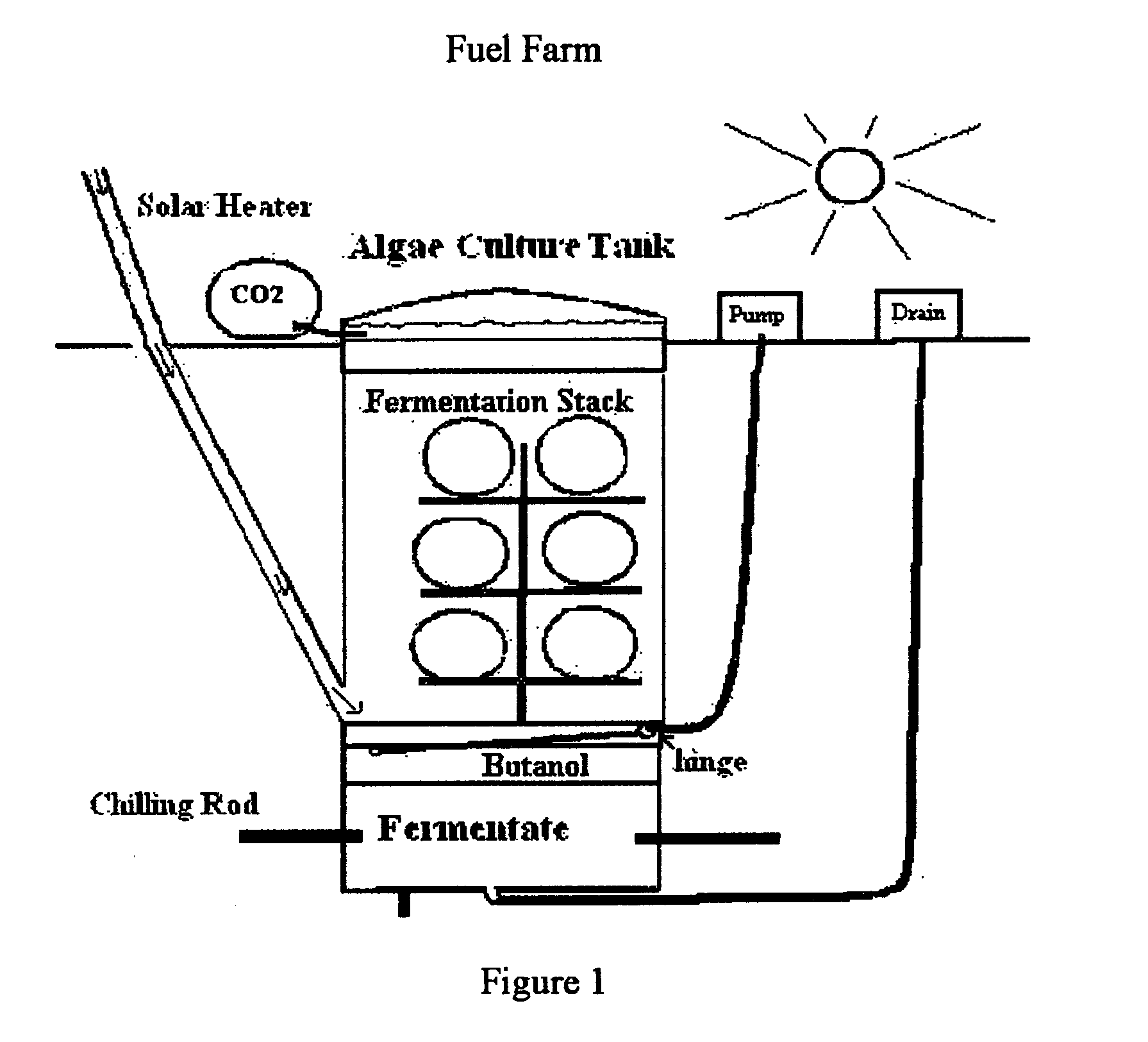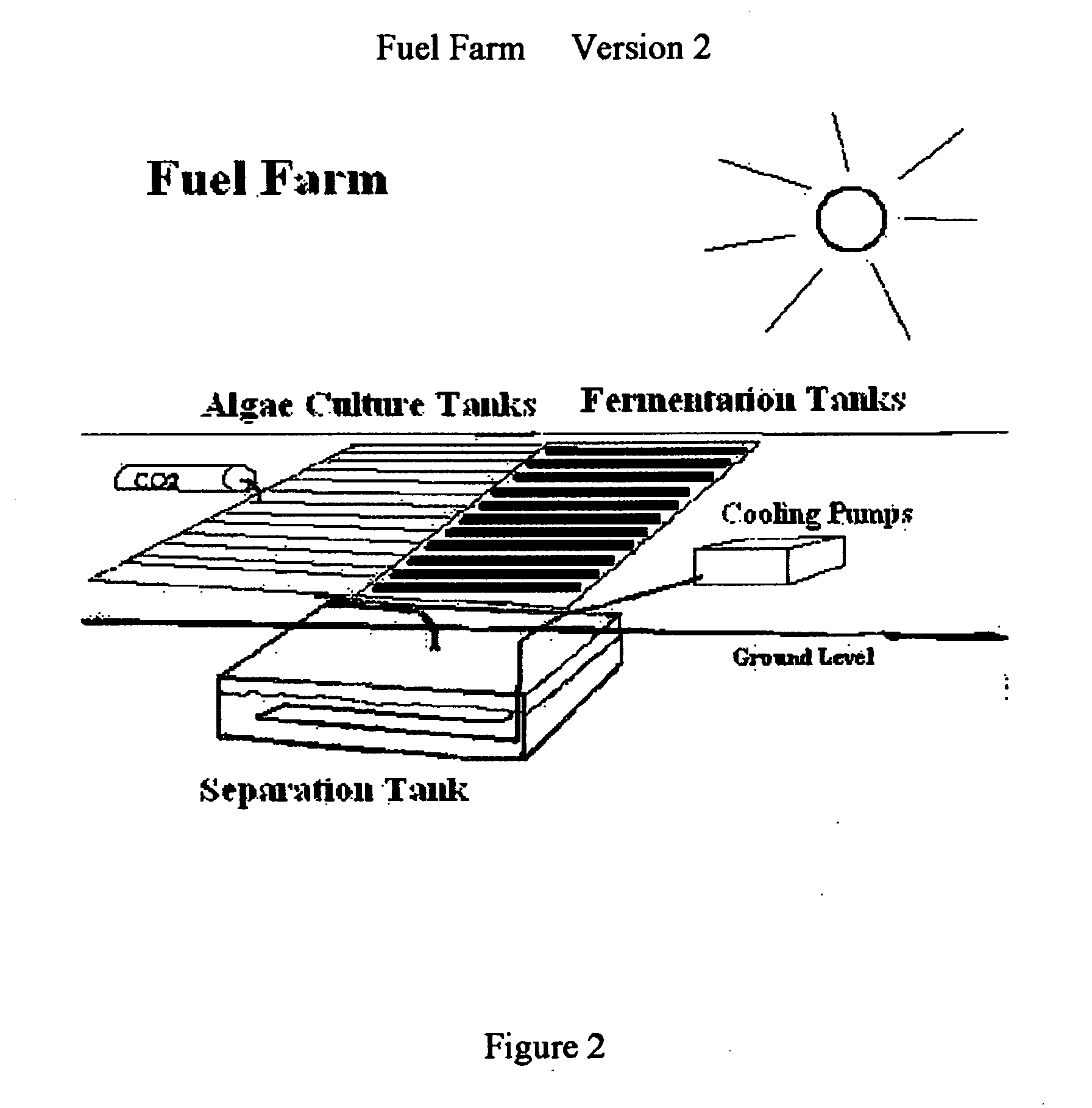Fuel farm
a technology of fuel farm and fuel tank, which is applied in the direction of biofuels, specific use bioreactors/fermenters, biomass after-treatment, etc., can solve the problems of pipelines, pumps, fuel systems, and unsatisfactory combustibles, and achieve the effect of improving the availability of nutrien
- Summary
- Abstract
- Description
- Claims
- Application Information
AI Technical Summary
Benefits of technology
Problems solved by technology
Method used
Image
Examples
Embodiment Construction
[0049]In the “smallest space” version: A single unit cell, scalable to any size, would include: (1) a four by 20 foot above-ground algae growing tank (2) a rack of up to six fermentation tanks made with 18 inch plastic culvert pipe in a rack system with six inches of space between the pipes, cantilever bracing and end caps such that the pipes may be replaced. (3) induction channels for hot air from the solar air heaters and provision for air heaters to burn butanol or hydrogen, CO2 mix if the fermentation gas product is combustible.
[0050]This facility will require a four foot by 24 foot trench dug into the earth and at one end we will need an additional four by four by ten foot hole for the chilling / separation tank. This tank is deeply placed to take full advantage of the earth temperature of 10° Celsius requiring cooling only to 0° Celsius to effect separation. It includes a bottom drain with an electrically or mechanically operated plug control in the tank.
[0051]Decanting is achie...
PUM
| Property | Measurement | Unit |
|---|---|---|
| lengths | aaaaa | aaaaa |
| lengths | aaaaa | aaaaa |
| volume | aaaaa | aaaaa |
Abstract
Description
Claims
Application Information
 Login to View More
Login to View More - R&D
- Intellectual Property
- Life Sciences
- Materials
- Tech Scout
- Unparalleled Data Quality
- Higher Quality Content
- 60% Fewer Hallucinations
Browse by: Latest US Patents, China's latest patents, Technical Efficacy Thesaurus, Application Domain, Technology Topic, Popular Technical Reports.
© 2025 PatSnap. All rights reserved.Legal|Privacy policy|Modern Slavery Act Transparency Statement|Sitemap|About US| Contact US: help@patsnap.com



